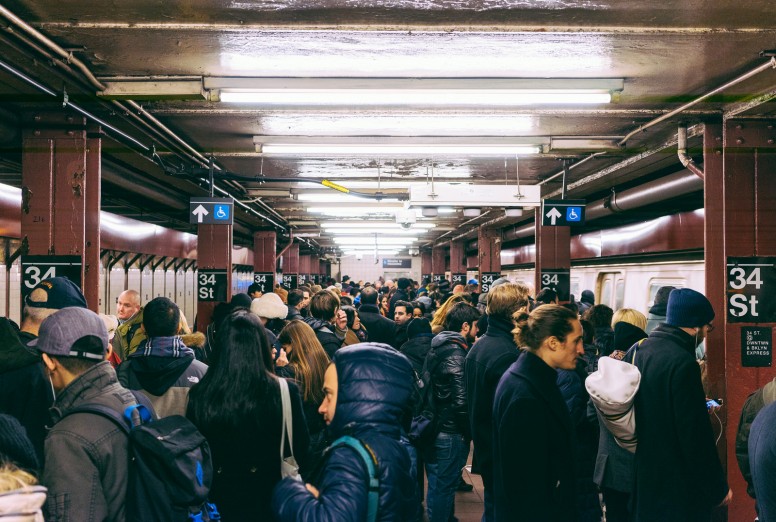It won’t come as a surprise to New York City residents that the length of their commutes already surpass the national average by wide margins. According to the Center for an Urban Future’s latest report, Fast City, Slow Commute, the average commute in New York City exceeds 40 minutes. The national average, meanwhile, is a relatively speedy 26 minutes.
Source: Center for an Urban Future
Just three of the city’s 55 Census-defined neighborhoods commute on average for less than 30 minutes a day, and all of those are in Midtown and Downtown Manhattan: Greenwich Village/Financial District, Stuyvesant Town/Turtle Bay and Chelsea/Clinton/Midtown. These neighborhoods also had the three highest rates of commuters who walk or bike (34 percent, 40 percent and 35 percent, respectively).
The report reveals that New York City neighborhoods with the ten longest commutes were in the Bronx and in southeastern Brooklyn and Queens. The Rockaways held the dubious honor of having the longest average commute of any neighborhood with 52.9 minutes.
But even neighborhoods relatively close to Manhattan’s Central Business District, faced lengthy commutes. Williamsburg/Greenpoint commuters travel an average of 36.2 minutes to work; Sunnyside/Woodside workers traveled for more than 37.4 minutes; and Astoria residents faced commutes of 38.1 minutes on average.
According to the study, New Yorkers also are increasingly more likely to work in their home borough–or in their home. Nearly 4 percent of New Yorkers now telecommute, avoiding long commutes altogether. Working from home is, somewhat ironically, most common neighborhoods closest to job centers and the best transit options.
So what’s the solution to shortening these longer-than-average commutes? The study recommends expediting the system-wide implementation of Communications Based Train Control (currently only installed on the L train) to increase train speed and frequency; adopting the Move NY toll reform plan to relieve already congested streets and raise revenue for the MTA; and integrating LIRR fares and transfers within city boundaries with the subway system.
Speeding up New Yorkers’ commutes, however, will require funding for the 2015-2019 MTA Capital Program and sustainable revenue for future capital projects. Without that, there’s not going to be much relief any time soon.

